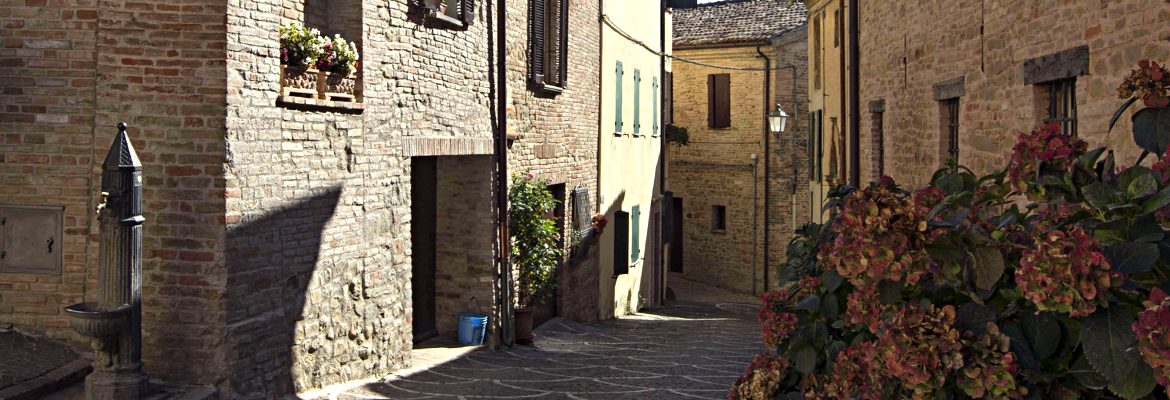Fiorenzuola di Focara is one of the four castles (together with Casteldimezzo, Gradara and Granarola) built between the 10th and the 13th century to form a solid defensive system and maintain control over the Siligata pass, along the border between the domains of the Church of Ravenna and the Church of Pesaro first, and between the Malatestas of Rimini and the Malatestas of Pesaro then.
The village was originally called just “Fiorenzuola”. In 1889, the specification “of Focara” was added, maybe as a reference to the many fires (“fuochi”) signaling to sailors the presence of the rocky coastline, or for the presence in the area of “fornacelle” where bricks and terracotta were baked (in local dialect, “fuchèr” or “fughèr” means kiln). As proof of the local history, remains of the medieval walls are still standing today, with three of the five bastions that marked the once pentagonal shape and some gates dating back to 17th and 18th century. In one of the gates, look for the plaque with Dante Alighieri’s verses from canto XXVIII of the Inferno book of the Divine Comedy; they make a reference to a fact that occurred in the sea right in front Fiorenzuola. The existence of the church of Sant’Andrea is documented as far back as the 12th century, but today only the striking bell tower survives, with its beautiful clock still marking the hours.
The small village of Fiorenzuola di Focara is particularly evocative, as it preserves the memory of the past thanks to its alleys and tiny squares.
From the center of the village take the road called Strada della Marina. You will reach a small secluded beach, famous for its pristine beauty and for its “cogoli” (rounded stones shaped by the sea) with which the “selcini” (artisans and sailors) used to pave the streets and squares of their hometown.




